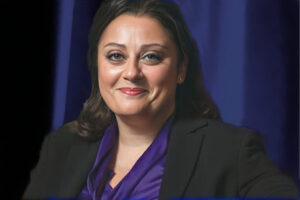“While rules might not create markets, there is a very important role for regulation to play in creating a fair, open and competitive playing field in a fragmented region such as the European Union (EU).”
This missive encapsulated the approach to regulatory divergence held by Virginie Saade, head of government and regulatory policy at Citadel. “Rules are a way to make sure that there is a common approach across the 27 countries.”
At Tradetech 2024, Saade said the EU has been through a number of regulatory fitness exercises, with many important reforms to capital markets being adopted or finalised over the years, in particular EMIR.
And while the UK plans to position itself as a standalone and competitive global financial market, with over 30 planned initiatives, the two jurisdictions have diverged much less than was feared in the immediate aftermath of Brexit.

Saade drew attention to the mooted consolidated tape, which will provide a single source of truth for European capital markets, improving transparency and efficiency. “The introduction of comprehensive and timely consolidated tapes in the EU and in the UK, both in the equity and the bond markets, promises to improve the efficiency, attractiveness and resiliency of the European capital markets,” Saade said. “The benefits that greater transparency [borne out of a consolidated tape] can deliver to the European capital markets cannot be overstated.”
Saade said the consolidated tape will also enhance the resiliency of European capital markets, “especially in times of stress”, ensuring that new information is efficiently assimilated and reflected in current price levels, allowing market participants to resume trading on alternative venues in case of an outage. “As the depth and liquidity of the European financial markets increase, issuers might find the region more attractive and consider raising capital here,” Saade added.
On the much discussed impending T+1 reduced settlement cycle in the US, Saade said by reducing the gap between time and execution and the settlement date, “you’re also reducing counterparty market and credit risk and associated cost across the trading to settlement chain, particularly during phases of market volatility”.
Thanks to the potential reduction to margin requirements, companies can manage their capital and liquidity risk more effectively, Saade believes. “So I think this is a strong argument for a move to T+1.”
Looking back, Saade said that while work on streamlining and enhancing rules of European financial markets is not yet finished, the “unprecedented” level of engagement between policymakers, regulators and industry, has been a “great achievement”, and has led to improvements in European financial markets over the last decade.
“Markets do not operate in isolation. They are deeply connected to the real economy.”
Saade said financial markets are often seen as a black box by people and businesses. “By increasing the general understanding of the financial sector and how finance works we will ensure dynamic financial markets can serve a larger share of the economy.”
Saade said European market competitiveness is critical. To achieve this, the industry must foster a forward looking, adaptable regulatory framework that encourages active engagement between policymakers, regulators and market participants, allowing European markets to remain open and integrated in the global financial ecosystem.
“In the UK, and in the EU, we need to keep our objective in mind as we are reforming our capital markets, which is to shift from the reliance on bank lending to allow financial markets to perform to their full potential and support the real economy,” Saade concluded.
